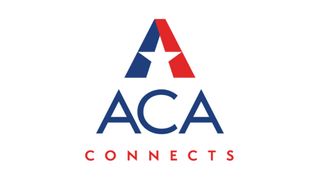ACA Connects: Broadband Data Crowdsourcing Must Be Credible
Smaller cable operators have summed up their wish list when it comes to the FCC's new regime for collecting data on broadband availability.
In the face of criticism from without (particularly Congress) and acknowledgement from within that it must find a more accurate way of identifying where broadband is and isn't, the commission voted unanimously Aug. 1, with two partial dissents by the Democrats, to create a new Digital Opportunity Data Collection (DODC) regime based on geospatial broadband coverage maps provided by fixed Internet service providers (a method backed by NCTA-The Internet & Television Association). It does not apply to mobile broadband, at least not yet.

Related: Free Press Optimistic About FCC Broadband Data Update
The Universal Service Administrative Company (USAC) will be charged with the new data collection, and will have to create a portal for collecting the carrier data and allow for crowdsourced challenges to the maps.
ACA Connects, in comments to the FCC on just how DODC should be structured, highlighted flexibility, potential costs, and making sure crowdsourced oversight of data was credible.
It said that while the shapefiles have the potential to provide the granularity and accuracy the FCC is looking for, it is unknown territory for both the FCC and providers so the benefits versus the costs must be weighed and balanced.
The main points of ACA Connects' pitch were:
Multichannel Newsletter
The smarter way to stay on top of the multichannel video marketplace. Sign up below.
1. "The Commission’s DODC regulatory regime should give providers flexibility in creating polygons, provide assistance to smaller providers, and encourage all providers to submit complete and accurate data.
2. "Crowdsourcing can be valuable in increasing the accuracy of coverage maps but only where it is credible. The Commission, therefore, should establish a process to properly vet all crowdsourced filings before sending them to providers and to give providers flexibility in responding to such third-party input." [NCTA says crowdsourcing broadband data should only be a 'supplement']
3. "While adding geolocation information will help provide more granular and accurate data, there are still many unanswered questions about the nature of a geolocation data collection. Additionally, the costs to the Commission and providers appear to be great – running into tens of millions of dollars initially and many millions annually.
4. "The Commission should eliminate the Form 477 collection two years after the DODC has been initiated unless the Commission makes an affirmative determination that the benefits of the collection continue to outweigh the costs."
Form 477 has been the carrier-supplied data used in the past and roundly criticized as providing an incomplete and/or inaccurate view of broadband deployment due to its inherent limitations.
Contributing editor John Eggerton has been an editor and/or writer on media regulation, legislation and policy for over four decades, including covering the FCC, FTC, Congress, the major media trade associations, and the federal courts. In addition to Multichannel News and Broadcasting + Cable, his work has appeared in Radio World, TV Technology, TV Fax, This Week in Consumer Electronics, Variety and the Encyclopedia Britannica.










